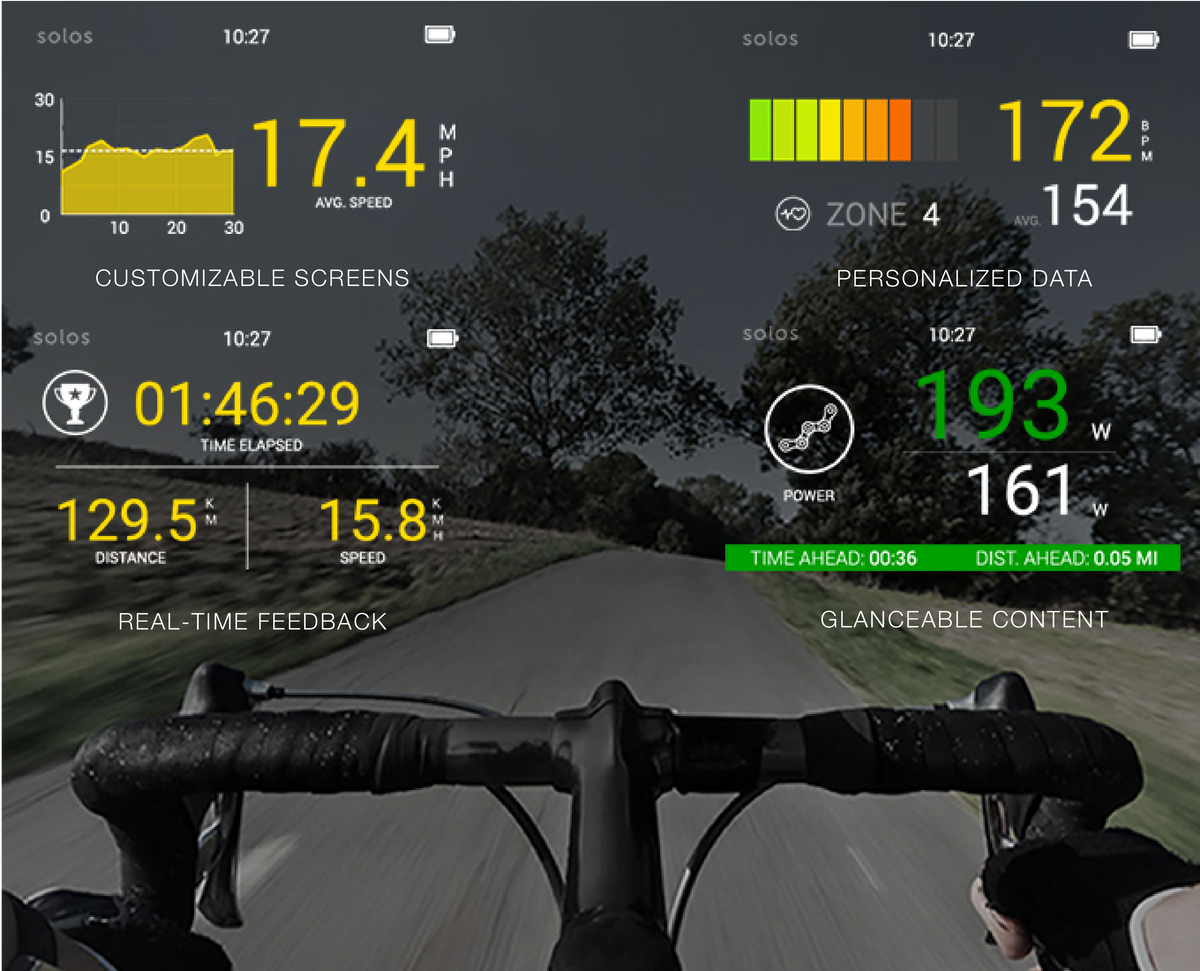U.S. track cyclists training for the 2016 Olympic Games are equipped with a new high-tech wearable: the Solos smart cycling glasses. The shades display in real-time performance metrics culled from the athletes’ bike sensors, heart rate monitors, and other self-tracking devices, enabling riders to view their critical stats without taking their eyes off the road.
“It’s a new way of experiencing the sport,” says Ernesto Martinez, director of sports performance wearables at Westborough, Mass.-based Kopin Corporation, which is developing Solos.
Many professional cyclists use bike computers to track metrics such as how many watts of power they are exerting and the cadence of their pedal stroke. Many cyclists also use heart rate monitors strapped around their chests or wrists, and are eyeing some of the newer, more in-depth wearables, such as lactate threshold monitors. The data helps the athletes gain insights on the training and maximize their energy expenditure.
Such devices require the rider to look down to view their data on different displays, or take their hands off the bike. Cyclists are incredibly good at multitasking—they can change their shoes and peel a banana at fairly high speeds—so glancing down isn’t a particularly big deal. Still, the few seconds it takes can present a safety issue, particularly when riding in a close pack of cyclists, or navigating crowds.

The Solos glasses aim to keep riders’ heads up and eyes on the road. The system integrates the data from bike sensors, heart rate monitors, and other sensors and micro-displays it in the right-hand corner of the cyclist’s vision. Riders can focus their eyes on the data or look past it to see the road ahead. “You can see around the image,” says Martinez, who came to Kopin from the MIT Media lab.
The technology works similarly to that of the no-longer-for-sale Google Glass. A phone app integrates the data from the various devices and sends it wirelessly to the electronics integrated in the frame of the shades. A very small optics module in front of one side of the sunglasses contains the micro-display that presents the data on a virtual screen in the rider’s field of view. An audio feed of the data reaches the rider through an ear piece.
Kopin has been collaborating over the last 18 months with USA Cycling—the governing body for professional cycling. The group focused first on functional qualities of sunglasses such as aerodynamics, weight distribution, and material, then added the micro-display and audio technologies. The result: some pretty rad shades.

Members of the U.S. track cycling team have been wearing the glasses during their training for the 2016 Olympic Games, which begin 5 August in Rio de Janeiro. The cyclists will not be allowed to wear the device during competition, however. Other professional sports organizations have similarly said that wearables are permitted during practice, but not during games.
Kopin on 10 May made public the partnership and on 24 May opened a Kickstarter campaign as a way to generate interest among cyclists. Early backers could pledge $250 in exchange for a pair of Solos, which the company expects to ship in October. Solos will retail for $499 and will be marketed to all cyclists—commuters, weekend riders, and professionals—according to Kopin.
(Kickstarter, Indiegogo, and other crowdsourcing platforms are popular among aspiring entrepreneurs and fledgling companies as a way to test the market and raise funding. But established companies with resources are increasingly using the platforms as a marketing strategy.)
Kopin’s micro-display technology dates back to 1992, when the company received $10 million in funding from U.S. Defense Advanced Research Projects Agency (DARPA) to develop wearable computer displays for soldiers in the field. Since then it has progressed from military to industrial applications, and now, the company hopes, to consumers.
Emily Waltz is a features editor at Spectrum covering power and energy. Prior to joining the staff in January 2024, Emily spent 18 years as a freelance journalist covering biotechnology, primarily for the Nature research journals and Spectrum. Her work has also appeared in Scientific American, Discover, Outside, and the New York Times. Emily has a master's degree from Columbia University Graduate School of Journalism and an undergraduate degree from Vanderbilt University. With every word she writes, Emily strives to say something true and useful. She posts on Twitter/X @EmWaltz and her portfolio can be found on her website.



